KWRI Researchers
The Kansas Water Resources Institute is proud to support innovative research faculty from different universities in Kansas. Typically, KWRI funds 2-year projects, with a focus on high-priority water topics identified by the state water plan. KWRI puts a special emphasis on early-career scientists and student (both graduate and undergraduate) support.
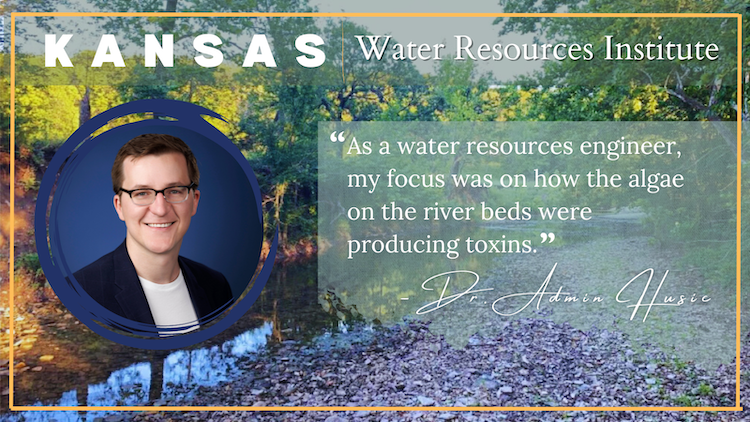
Admin Husic is a water resources engineer at the University of Kansas. Admin formed a diverse team of experts to examine algae, not on the surface of the water, but beneath. Using field sensors and hand probes,this scientific team identified specific types of algae in the water and studied algae temperature and diatoms. They would take samples every 10 daysback to the lab to further examine the physical characteristics. Using thesecharacteristics,the team could build models to examine traits among the algae riverbed samples. These samples all showed toxins were present. The field sensors and probes were able to show temperature, dissolved oxygen levels, and water PH. Research like this is important for maintaining safe and useable water for livestock and crops.
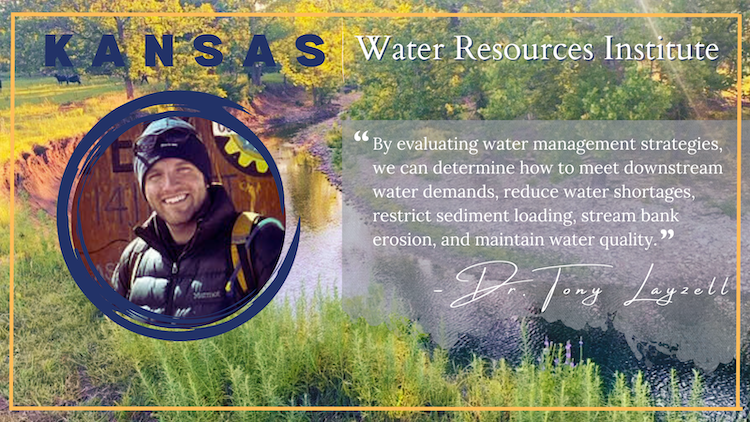
Tony Layzell works at the Kansas Geological Survey at the University of Kansas. His research aims to show the importance of evaluating water management strategies. By doing so, it is possible to determine how to meet downstream water demands and reduce water shortages while also restricting sediment loading, streambank erosion, and maintaining water quality. The objective was to develop and demonstrate the importance of reservoir management on streambank stability and in-stream sediment loads using models that could simulate surface water operations and streambank erosion. The research consisted of further developing the existing reservoir management model to simulate streambank stability, characterizing the reservoir, and collecting/interpreting water quality data.
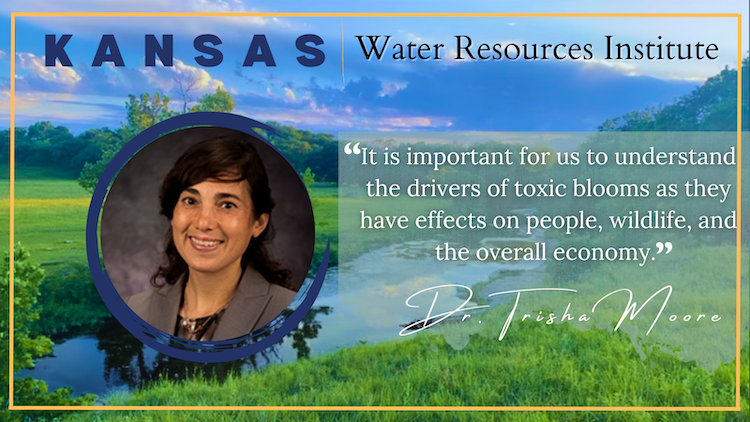
Trisha Moore, a Kansas State University scientist, is conducting research focusing specifically on the drivers of harmful algal blooms and how to can help predict when and how long the bloom will occur. Moore's previous research with KWRI examined the modeling to predict when cyanobacteria will bloom based upon certain characteristics. Her research concluded that studying cyanobacteria in a test tube is a far cry from studying it in a reservoir where there are many species of cyanobacteria competing for environmental resources. For this project, Moore’s research team took machine learning data tools and coupled them with their mechanistic model. The team added robotics and created a monitoring platform: a floating device with sensors that monitor water quality. Moore hopes that this research project will help researchers be able to understand why the blooms occur nearly every other year.
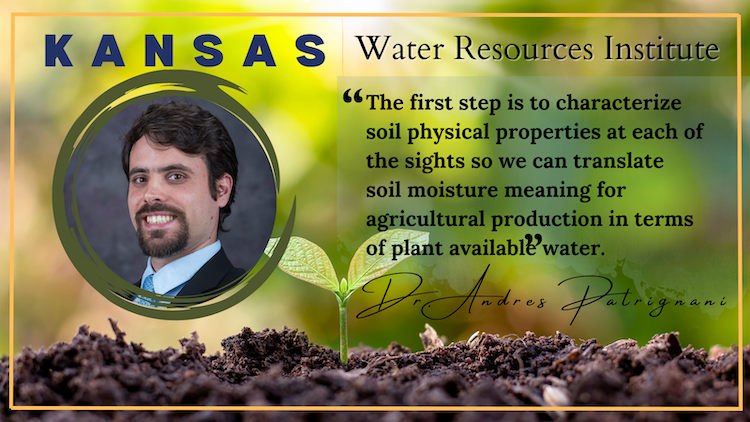
Andres Patrignani is a researcher from Kansas State University. His work with KWRI hopes to develop a web-based system for tracking and generating short-term forecasts of drought conditions across the state of Kansas. This new system will provide fine temporal (daily) and spatial (field scale) soil moisture resolution currently unavailable from other drought monitoring tools (e.g. U.S. Drought Monitor and the Seasonal Drought Outlook). This new tracking system will enable timely and accurate identification of drought-vulnerable regions and communities across Kansas.
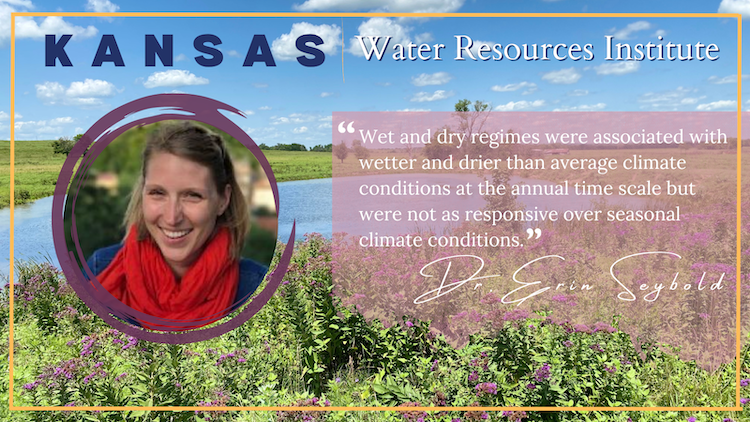
Erin Seybold is a scientist with the Kansas Geological Survey at the University of Kansas. Her research with KWRI
focused on characterizing the historical streamflow of the Arkansas River at Larned, Kansas. This project hopes to understand the drivers of flow intermittency and the feedbacks that may determine whether the river remains in a flowing or dry state. Her work will examine these wet/dry regimes that can span multiple years, and how they are associated with climate conditions at the annual time scale vs. seasonal climate conditions.
